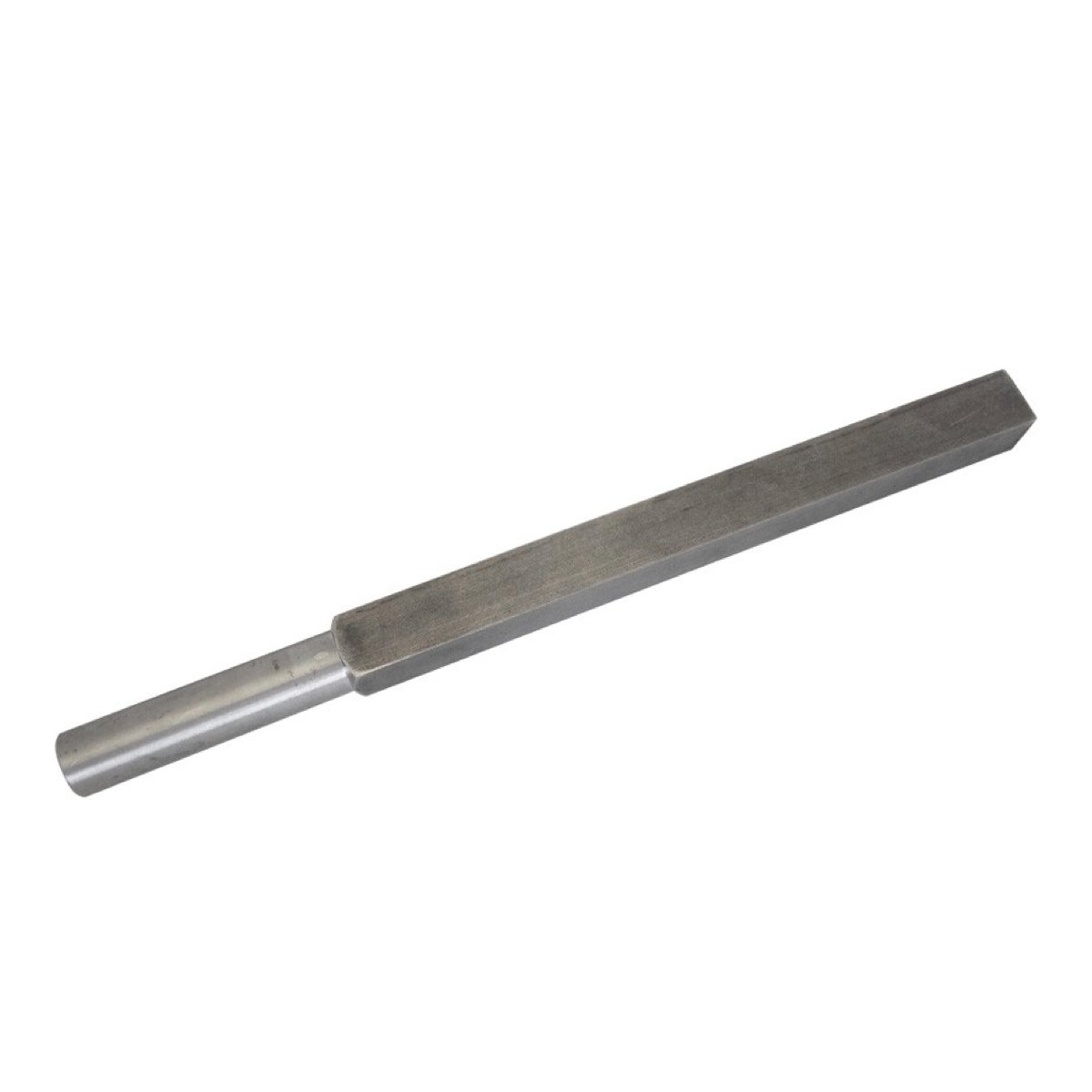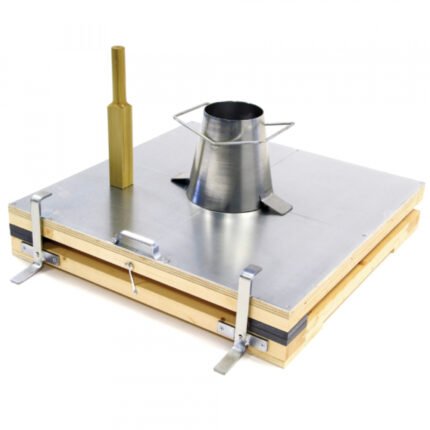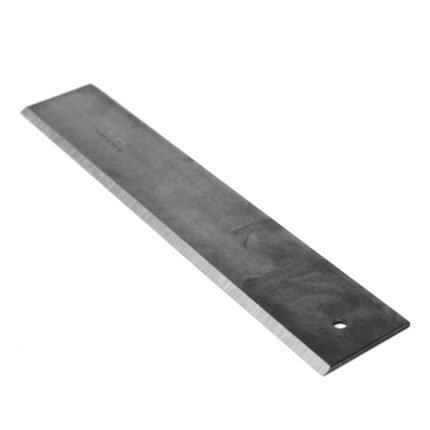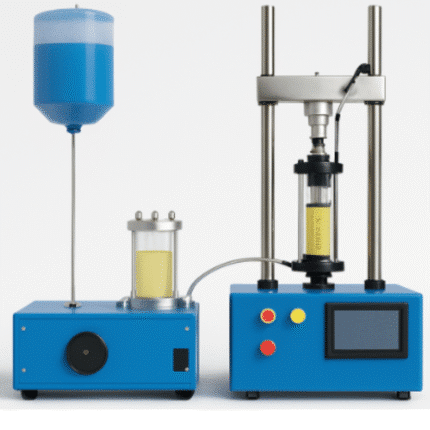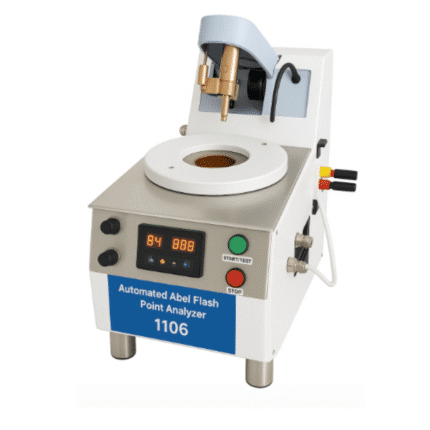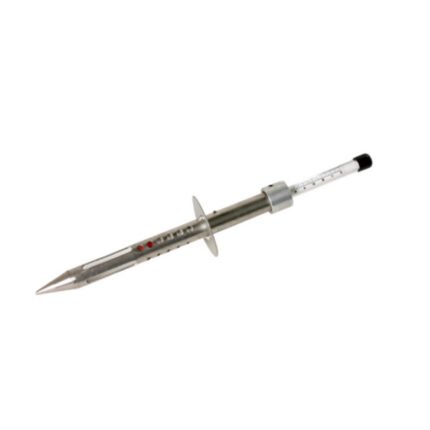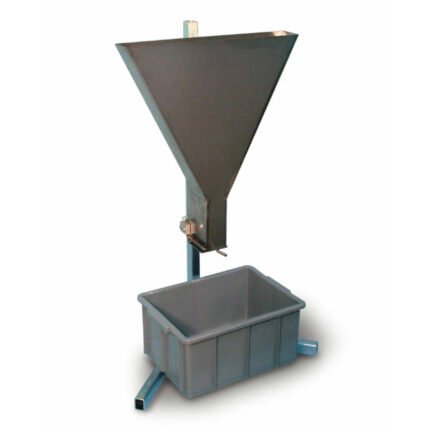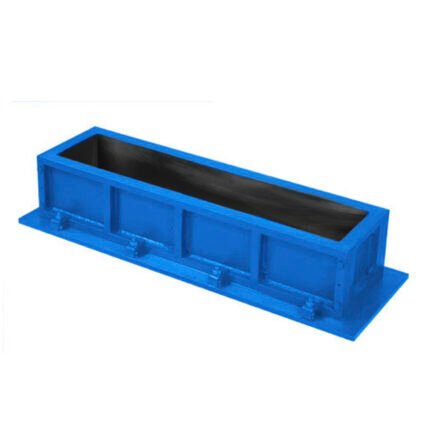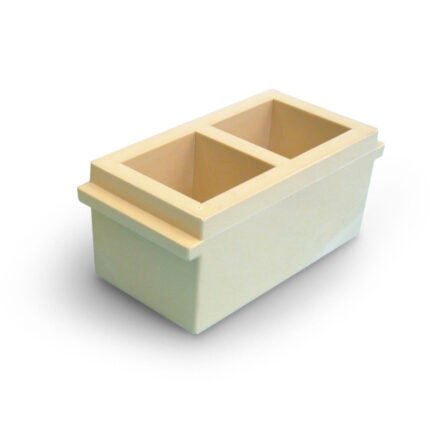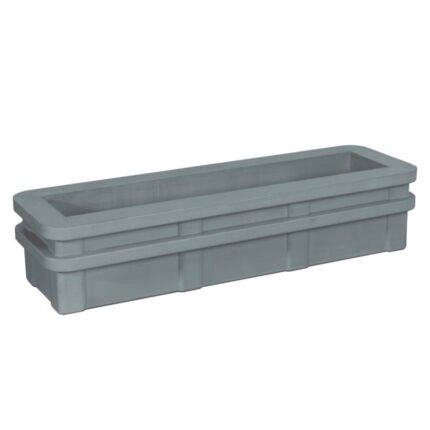AZA 1119 TAMPING ROD
- Used for compacting concrete in slump and strength tests
- Steel rod with hemispherical ends
- Available in 16 mm and 25 mm diameters
- Standard length: 600 mm or 600 mm (per IS/ASTM)
- Ideal for field and laboratory use
- Corrosion-resistant finish
- Conforms to ASTM C143, IS 1199 standards
Description
Tamping Rod is a simple yet essential hand tool used in concrete testing to ensure proper compaction of concrete in slump cones, cube molds, and cylindrical molds. At Azalab, we offer precision-finished, durable steel tamping rods designed to meet all major international testing standards.
Concrete compaction plays a crucial role in eliminating air voids and ensuring accurate measurement of strength and workability. The Tamping Rod helps achieve uniform density in concrete samples by applying consistent tamping across layers during preparation. Improper tamping can lead to under-compacted specimens, causing incorrect test results and compromised quality control.
Azalab’s Tamping Rods are manufactured using high-grade stainless or mild steel, hardened and polished to resist bending and corrosion. Each rod features hemispherical (rounded) ends, which prevent damage to molds and ensure even compaction. The rods are finished to exact diameter and length specifications in line with major testing standards:
-
ASTM C143 / C192: Requires a 16 mm diameter rod, 600 mm length
-
IS 1199: Accepts 16 mm diameter rod, 600 mm long
-
ASTM C31 / C39 / C138: Also includes 25 mm diameter rods for larger molds or field compaction
The tamping process typically involves placing concrete in layers within a mold and rodding each layer uniformly. For slump testing, the concrete is rodded 25 times per layer using a 16 mm rod. In cylinder and cube testing, the same process is followed to eliminate trapped air pockets and settle the mix uniformly.
Each Tamping Rod from Azalab undergoes strict quality checks for dimensional accuracy and surface finish. They are suitable for:
-
Slump cone test setups
-
Cube mold compaction
-
Cylinder mold preparation
-
Density (unit weight) tests
-
On-site concrete sampling
The rods are available in different variants:
-
16 mm × 600 mm (standard for slump and cube test)
-
25 mm × 600 mm or 450 mm (used in field compaction or larger molds)
-
With engraved length/size markings (optional)
-
In polished steel or rust-proof coated finish
To ensure testing consistency, it’s recommended to use only calibrated and dimensionally compliant tamping rods. The use of improper rods can result in over-compaction or under-compaction, skewing strength test results. Regular cleaning and inspection for bending or wear is also advised.
In labs that follow ASTM, IS, or BS standards, the tamping rod is a mandatory accessory for slump testing, compressive strength preparation, and unit weight measurement. Proper use of a standardized tamping rod improves data reliability and helps maintain accreditation for testing labs.
For details on slump testing procedures and proper compaction methods, refer to ASTM C143 Standard Practice for Slump of Hydraulic-Cement Concrete.
Whether you operate a construction lab, QC department, academic institute, or field testing unit, the Azalab Tamping Rod delivers standard-compliant performance, long life, and consistent compaction for accurate concrete testing.
Specifications:
| Feature | Specification |
|---|---|
| Material | Hardened Steel / Stainless Steel |
| Diameter Options | 16 mm, 25 mm |
| Length | 600 mm (standard), 450 mm (optional) |
| End Shape | Hemispherical (Rounded) |
| Surface Finish | Polished or Corrosion-Resistant Coated |
| Usage | Slump, Cube, Cylinder, Unit Weight Tests |
| Standards Compliance | ASTM C143, C192, IS 1199, C138 |
FREQUENTLY ASKED QUESTIONS (FAQ):
Q1: What is a Tamping Rod used for?
A1: It is used to compact concrete in molds during slump, cube, and cylinder testing to remove air voids and improve accuracy.
Q2: What size tamping rod is used for slump tests?
A2: A 16 mm diameter, 600 mm long rod with a rounded end is used as per ASTM and IS standards.
Q3: Can this rod be used for all types of concrete molds?
A3: Yes, but different diameters (16 mm or 25 mm) may be needed depending on mold size and standard.
Q4: Is the tamping rod corrosion-resistant?
A4: Yes, Azalab offers rods in stainless steel and coated finishes to prevent rust.
Q5: Do you provide certification or markings on the rods?
A5: Optional engraved size markings or certificates of compliance can be provided upon request.
Additional information
| Material |
Hardened Steel / Stainless Steel |
|---|---|
| Diameter Options |
16 mm, 25 mm |
| Length |
600 mm (standard), 450 mm (optional) |
| End Shape |
Hemispherical (Rounded) |
You may also like…
Advanced Triaxial Test System (UU–CU–CD Capable) (AZA 1296)
- UU–CU–CD test modes for complete soil strength profiling
- Automated control of pressure, load, and drainage
- Compatible with clay, silt, sand, and mixed soils
- Integrated data acquisition and real-time graphing
- Meets ASTM D2850, D4767, BS1377, AASHTO standards
- Ideal for geotechnical, research, and academic use
Air Bag Trainer (Model AZA1246)
Alternator Trainer (Model AZA1247)
Arc Welding Machine (AZA 1234)
AutoDist‑86 Glass Distillation (AZA 1282)
AutoFlash – Automated Abel Flash Point Analyzer( AZA 1277)
AZA Lab's AutoFlash-1277 is a fully automated, microcontroller-based Abel Flash Point Analyzer designed to accurately determine the flash points of combustible liquids. Conforming to IP 170, ISO 13736, and IS 1448 (P:20) standards, it ensures precise and safe analysis of samples in the temperature range of -30°C to 70°C, extendable up to 110°C.
Equipped with a built-in PC and touchscreen display, the AutoFlash-170 delivers intuitive operation, automated calibration, advanced ignition options, and rapid heating procedures for high-efficiency testing. Ideal for laboratories, petrochemical industries, and quality control applications, this standalone unit streamlines the testing process with enhanced accuracy, safety interlocks, and programmable procedures.
Related products
AZA 1104 K-SLUMP TESTER
AZA 1108 INITIAL SURFACE ABSORPTION TEST (ISAT) APPARATUS
- AZA 1108 ISAT Apparatus for concrete durability testing
- Measures water absorption rate from concrete surfaces
- Follows BS 1881-208 standard procedures
- Useful for bridges, marine structures, water tanks
- High precision setup with capillary tube system
- Records data at 10, 30, and 60-minute intervals
- Sturdy construction ideal for long-term lab use
AZA 1110 CONCRETE FLOW TABLE TEST SET
- AZA 1110 Concrete Flow Table Set for workability testing
- Measures spread diameter after vertical jolts
- Ideal for SCC and high-consistency concrete
- Durable design with precise machining
- Includes cone mould and tamping rod
- Compliant with IS, ASTM, and EN standards
- Easy to clean, store, and maintain in lab settings
AZA 1111 V FUNNEL
AZA 1122 CUBE MOULD (METAL)
- Cube Mould AZA 1122: Precision-engineered for 150mm concrete sample casting.
- Material: Constructed from durable metal for long-term use.
- Standard Compliance: Meets IS and BS specifications for concrete testing.
- Design: Rigid construction ensures dimensional accuracy and repeatability.
- Application: Ideal for laboratories, construction sites, and educational institutions.
AZA 1124: BEAM MOULD
- AZA 1124 Beam Mould for concrete flexural strength testing
- Sturdy, corrosion-resistant steel or cast iron construction
- Produces precise concrete beams – 100x100x500 mm or 150x150x700 mm
- Split-mould design for easy de-moulding
- Reusable and lab-compliant with IS & ASTM standards
- Available at Azalab with warranty and expert support
AZA 1126 PLASTIC CUBE MOULD
Key Benefits of AZA 1126 Plastic Cube Mould
- Standard Size (150mm): Complies with industry norms for compressive strength testing
- Durable Plastic Construction: Corrosion-resistant and reusable
- Lightweight & Portable: Easy to transport, ideal for fieldwork
- Modular Design: Quick assembly, disassembly, and cleaning
- Precision Engineering: Delivers consistent, repeatable test results
- Educational Friendly: Ideal for labs, schools, and training institutes
- Low Maintenance: No rusting or oiling required between uses
- Environment Resistant: Suitable for high-moisture or coastal testing sites

 Rock
Rock Aggregate
Aggregate Cement
Cement Concrete
Concrete Soil
Soil Steel
Steel Bitumen/Asphalt
Bitumen/Asphalt Security Survey Equipment
Security Survey Equipment General Items
General Items